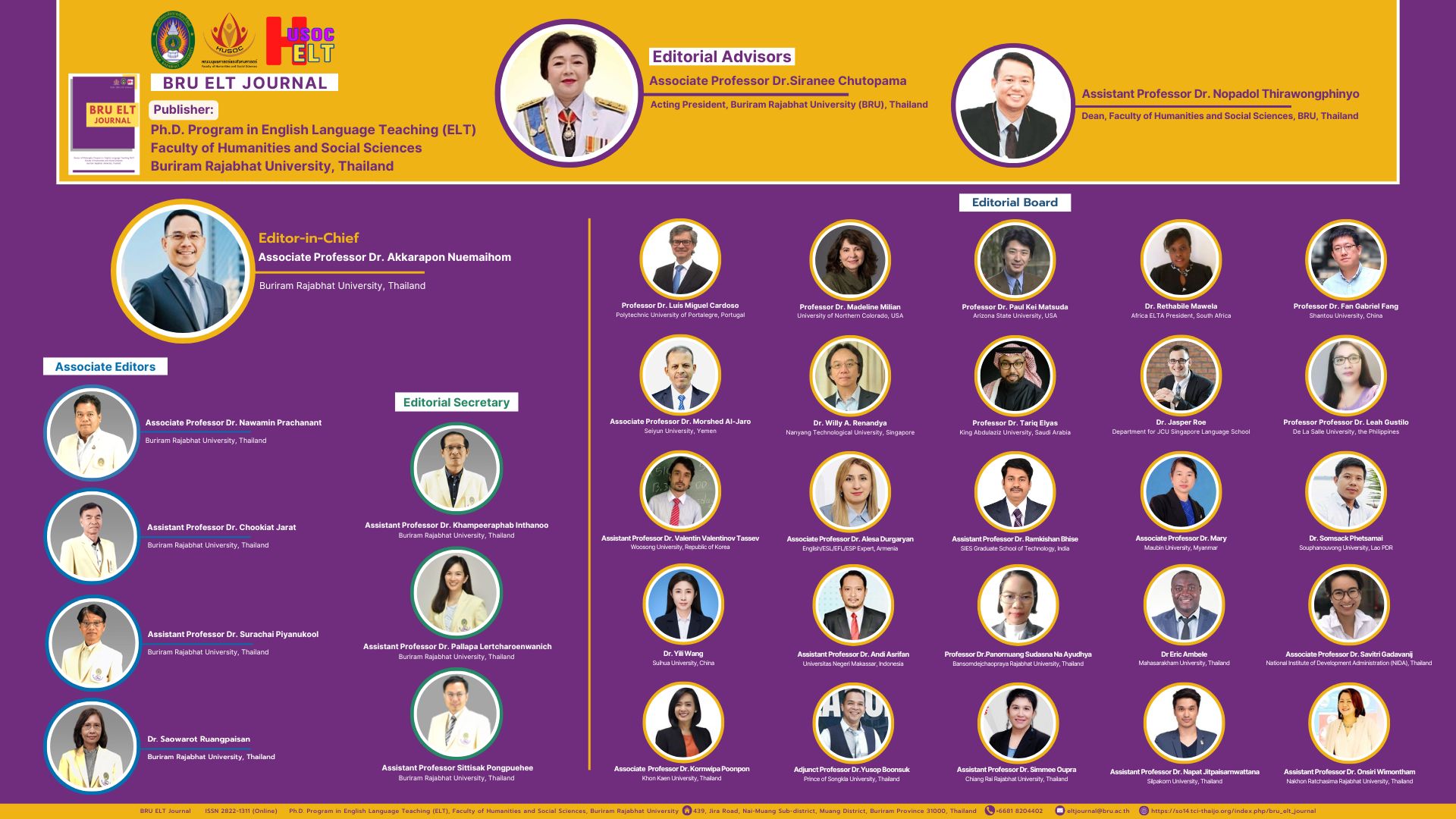The Teaching-Testing Nexus: Embracing the Challenges and Opportunities for Optimal Learning Outcomes
DOI:
https://doi.org/10.14456/bej.2023.10Keywords:
assessment, feedback, interplay, teaching-testing nexus, learning outcomesAbstract
This paper adopts a new approach to analyze the interrelationship between teaching, learning, and testing, comparing the dynamic between these significant pedagogical elements. The paper examines how the quality of teaching influences student learning and performance on tests, and how well-designed tests can support and enhance the learning process. Furthermore, the study investigates how testing can be used as a tool to shape and guide teaching strategies, and how teaching can in turn shape testing practices. Drawing on a range of theoretical and empirical literature from the fields of educational psychology, assessment, and instructional design, the paper offers insights into effective teaching and testing practices that promote student learning and engagement, with a special focus on the challenges and limitations of different approaches. The review concludes that a balance between teaching and testing is critical to achieving optimal learning outcomes, and that teachers should adopt student-centered strategies that encourage active engagement with the materials and foster a deep understanding of key concepts. Finally, the paper proposes a conceptual framework for understanding the interplay of teaching and testing, offering practical recommendations for educators to navigate this dynamic educational phenomenon.
References
Abrams, L. M. (2004). Teachers’ views on high-stakes testing: Implications for the classroom. Policy Brief. Education Policy Studies Laboratory, Arizona State University College of Education.
Chappuis, J., Stiggins, R. J., Chappuis, S., & Arter, J. (2012). Classroom assessment for student learning: Doing it right-using it well. Pearson Upper Saddle River, NJ.
Long, M. H., & Doughty, C. J. (2011). The handbook of language teaching (Vol. 63). John Wiley & Sons.
Madsen, H. S. (1983). Techniques in testing. ERIC.
Popham, W. J. (2008). Transformative assessment. ASCD.
Ramos, C. D., & Inocian, R. B. (2022). Design thinking for virtual teaching of world history towards 21st century skills development. Journal of Research, Policy & Practice of Teachers and Teacher Education, 12(1), 15–33. https://doi.org/10.37134/jrpptte.vol12.1.2.2022
Tayeb, Y. A. (2019). On how secondary school students are vicimized by the English public examination: A washback study. International Journal of Education and Pedagogy (IJEAP), 1(2), 54–62. http://myjms.moe.gov.my/index.php/ijeaphttp://myjms.moe.gov.my/index.php/ijeap
Tayeb, Y. A., Abd Aziz, M. S., Ismail, K., & Khan, A. B. M. A. (2014). The washback effect of the general secondary English examination (GSEE) on teaching and learning. GEMA Online® Journal of Language Studies, 14(3). DOI: 10.17576/GEMA-2014-1403-06
Wenglinsky, H. (2001). Teacher classroom practices and student performance: How schools can make a difference. ETS Research Report Series, 2001(2), i–37.
Zhang, L., & Zheng, Y. (2018). Feedback as an assessment for learning tool: How useful can it be? Assessment & Evaluation in Higher Education, 43(7), 1120–1132. https://doi.org/10.1080/02602938.2018.1434481






